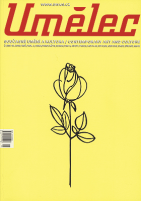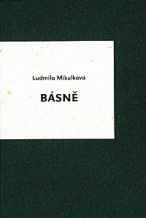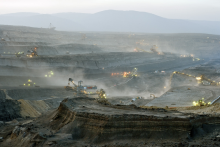| Revista Umělec 2000/4 >> “All Clean Air and Ocean” | Lista de todas las ediciones | ||||||||||||
|
|||||||||||||
“All Clean Air and Ocean”Revista Umělec 2000/401.04.2000 Karel Císař | north | en cs |
|||||||||||||
|
"When the Norweigian theorist Ina Blom was asked in this year’s first issue of NU magazine to say how the collapse of the dichotomy between the center and the periphery revealed itself in the Nordic region, she recalled the design of the poster and catalogue that had initiated the “Nordic Miracle” back in 1998 for the exhibition Nuit Blanche. The images of Eskimos and igloos played with the stereotypical ideas that the power center advances about the periphery. Despite the fact that modern life in France and Sweden do not really differ all that much, to the average French person the north is still a wild land covered in snow and ice and Nordic artists do not hesitate to work with these inveterate expectations. The poster and the catalogue covers for North, the current Vienna show, use reindeer and snowflake icons, suggesting that artists from the north will not soon part with this successful strategy.
Sabine Folie and Brigitte Kölle, the curators of the show, were very much aware of the issues associated with territorial determination as a key to constructing a representative, contemporary exhibition of visual art. Instead of traditional themes typical for Nordic art, such as light, nature, melancholy and madness, they chose a moment of narration as the basis for all of the more than thirty presented artistic positions. This moment does not only stem from demographic regional specialties, like low population density, but most of all from the external geographical isolation that originally pushed the Nordic countries out to the periphery. Furthermore, the exhibition suggests that narration and the need for communication—both of which have been steadily developing in the Nordic scene since the local artists came into lively contact with members of Fluxus—anticipated in a certain way the rehabilitation of art perceived as social action. The elite group of artists working in this field ranges from Maurizio Cattelan, to Liam Gillick, Carsten Höller, Gabriel Orozco, Jorge Pardo, and Rirkrit Tiravanija. It’s no accident that these artists come from the periphery, from towns in Italy, Belgium, Mexico, Cuba, Argentina, and Aylesbury and Glasgow in Britain. With parasitical tenacity they have managed to work their way into the global scene with their incommunicable language, which their original local dialects are distinctly incorporated into. The same could be said for the works of artists from Iceland, Denmark, Norway, Finland, and Sweden exhibited in Vienna’s Kunsthalle. In addition to narration, as emphasized by the curators, a number of artists also took a new look at the traditional themes of wild nature and melancholy. This was especially true with works devoted to nature. Joachim Koester, a Danish artist living in New York, exhibited nine color and black and white photographs from his series Row Housing (1999), which shows a deserted arctic settlement. However the settlement is not located in the north of Europe but on the Canadian island of Cornwallis. At the beginning of the 1950s there were only a few businesses, missionaries, and a small company of mounted police on the island. During the height of the Cold War, the Canadian government decided to move a group of original inhabitants away from this region out of fear of losing the territory. In the 1970s, Ralph Erskine, a Swedish architect, began building a settlement where racially and socially different groups could integrate. But this experiment failed and all that remained was the scrapped body of the role-model arctic settlement, which looks like an abandoned space laboratory in Koester’s photographs. The bare, rocky land and especially the massive amounts of telecommunication equipment only intensify this feeling. Works by the well-known Finnish photographer of “dogs, fish, and old men” Esko Männikö exuded similar sentiment. He typically hangs his pictures in wooden frames bought in second-hand stores and leaves them to weather on his house in Oulu. But Männikö instead decided to break with tradition and place them into large, elegant three-dimensional frames, which were hanging on chains from the ceiling. To see the individual panoramic 360° pictures the viewer had to duck inside the space from below and then stand up to be surrounded by them. Long horizons of peripheral landscapes full of deserted construction sites, abandoned forest huts and forgotten rubble heaps under overpasses—which could suddenly be touched—enveloped the viewer. Hreinn Fridfinnsson’s and Jan Svenungsson’s photographs documented their intervention projects concerning the relationship between humans and nature. Fridfinnsson, a co-founder of the legendary Icelandic group SÚM, displayed here a project from 1974 when he built a peculiar house in an uninhabited part of Iceland. The external walls of the house were covered with wallpaper while the outside windows were decorated with lace curtains. The surrounding landscape instantly became the interior of the house while the exterior remained trapped inside. Fridfinnsson was inspired by the story of one lonely man from the book Icelandic Aristocracy who built such houses in the 1930s. Jan Svenungsson, on the other hand, consciously adapted his artifacts to urban spaces. He first took pictures of old industrial chimneys in the 1980s and then began building them himself. Their different territorial and cultural contexts significantly altered their meaning. A chimney built in the immediate vicinity of a Stockholm gallery as part of an exhibition gradually loses the status of a work of art for the public and is soon considered a real chimney. Whereas a similar chimney built during the Expo in South Korea remains a futuristic artifact due to its exotic shape. A completely mistaken meaning was attributed to Svenungsson’s chimney in a meadow in the village of Drewen, north of Berlin, where it was unequivocally interpreted as a reference to Nazi concentration camps, despite the artist’s original intention. We will have to wait and see what connotations the chimney on Vienna’s Mariahilferstrasse will assume. Waiting around is not what the other Nordic artists opted for as they chose to directly discourse on current political issues in Austria. Elin Wikström was fascinated by the position of the Helsinki-based translator Mike Garner who was willing to work for Kunsthalle only under the condition that his fee be donated to Austrian anti-racist organizations. Wikström imitated his stance by creating a center where typical Austrian TV programs were projected while clips of demonstrations and political speeches interfered. Volunteers then took the tapes around town and left them to be found accidentally by random people. The Danish group Superflex, famed for their bio-gas heating plant in Tanzania, set up their own Internet communication forum called Superchannel. Works by Ann Lislegaard, Knut Ĺsdam and Miriam Bäcktröm were concerned with the more formal issues of the construction of space. Lislegaard, a Norwegian-born artist living in Copenhagen and New York, worked directly with the viewer’s field of perception, which she directed at an empty white wall illuminated by a source of light that responded to the intensity of sound produced by a narrated recording. Ĺsdam, also a Norwegian living in New York, shut the viewer inside one of three dark booths built into the gallery walls. The visitor could listen to Ĺsdam’s stories through headphones and observe the impersonal silhouettes of other visitors or the clear contours of passers-by out on the street behind the darkened one-way mirrors. Bäckström from Sweden, known for her photographs of paranoid virtual spaces Museums, Collections and Reconstructions (1998-1999), presented her previously exhibited series of film set interiors Set Constructions (1995-2000). People were missing from the images, but the objects they left behind gave testimony to their presence: a newspaper, a suitcase, a towel. Backström was able to capture her spaces as she found them in the film studios, usually maintaining the same light and camera position. Only she widened the scope of the shot so that the construction elements supporting the set would be included in the picture. In some of them the construction was shifted to the level of visibility, like in the picture of the public washroom whose central symmetry refers to the space behind a missing mirror from where the picture was taken. Artists involved in performance activities made up the most strongly represented group at the exhibition. Elisabet Apelmo went back to her family home where she performed common household tasks in her mother’s clothes: She washed in her clothes; she slept in her nightgown and ate breakfast in her robe. Elina Brotherus, following the suggestion of her friend, learned French by sticking labeled paper to the corresponding objects. Kari Mjatveit took photographs of peculiar events throughout which people and things created ambiguous constellations. In addition to Peter Land’s Lake (see Umělec 03/00)—interpreted as a radical return to nature—the most effective works in this group included the well-known installationToday (1996-1997) by Finnish filmmaker Eija-Liisa Ahtila. She projected her ten-minute short onto three screens. But because they were impossible to watch from one place, the viewer had to move through the dark space from one screen to another following the film’s characters: a young girl, an adult man and an old lady. Each of them told a story of the death of a loved one. The individual monologues created only a fragmentary framework. In addition to the tragic event of an old man getting hit by a car as he lay on the road in the shadow of a tree, we also discover the traumatic relationships between the individual characters and their personal views of the world. The film was shot in Finnish with English subtitles with an awareness of advertising esthetics, and it represents one of the highlights of the Nordic art scene. The story affected everybody, and there was nothing left to say but to quote the most famous Nordic artist of the 1990s, Björk, who showed her videos Hunter and Jóga at the exhibition in Vienna: “I’m no fucking Buddhist, but this is enlightenment.” Translated by Vladan Šír "
01.04.2000
Artículos recomendados
|
|||||||||||||
|
04.02.2020 10:17
Letošní 50. ročník Art Basel přilákal celkem 93 000 návštěvníků a sběratelů z 80 zemí světa. 290 prémiových galerií představilo umělecká díla od počátku 20. století až po současnost. Hlavní sektor přehlídky, tradičně v prvním patře výstavního prostoru, představil 232 předních galerií z celého světa nabízející umění nejvyšší kvality. Veletrh ukázal vzestupný trend prodeje prostřednictvím galerií jak soukromým sbírkám, tak i institucím. Kromě hlavního veletrhu stály za návštěvu i ty přidružené: Volta, Liste a Photo Basel, k tomu doprovodné programy a výstavy v místních institucích, které kvalitou daleko přesahují hranice města tj. Kunsthalle Basel, Kunstmuseum, Tinguely muzeum nebo Fondation Beyeler.
|


































 We Are Rising National Gallery For You! Go to Kyjov by Krásná Lípa no.37.
We Are Rising National Gallery For You! Go to Kyjov by Krásná Lípa no.37.
Comentarios
Actualmente no hay comentariosAgregar nuevo comentario